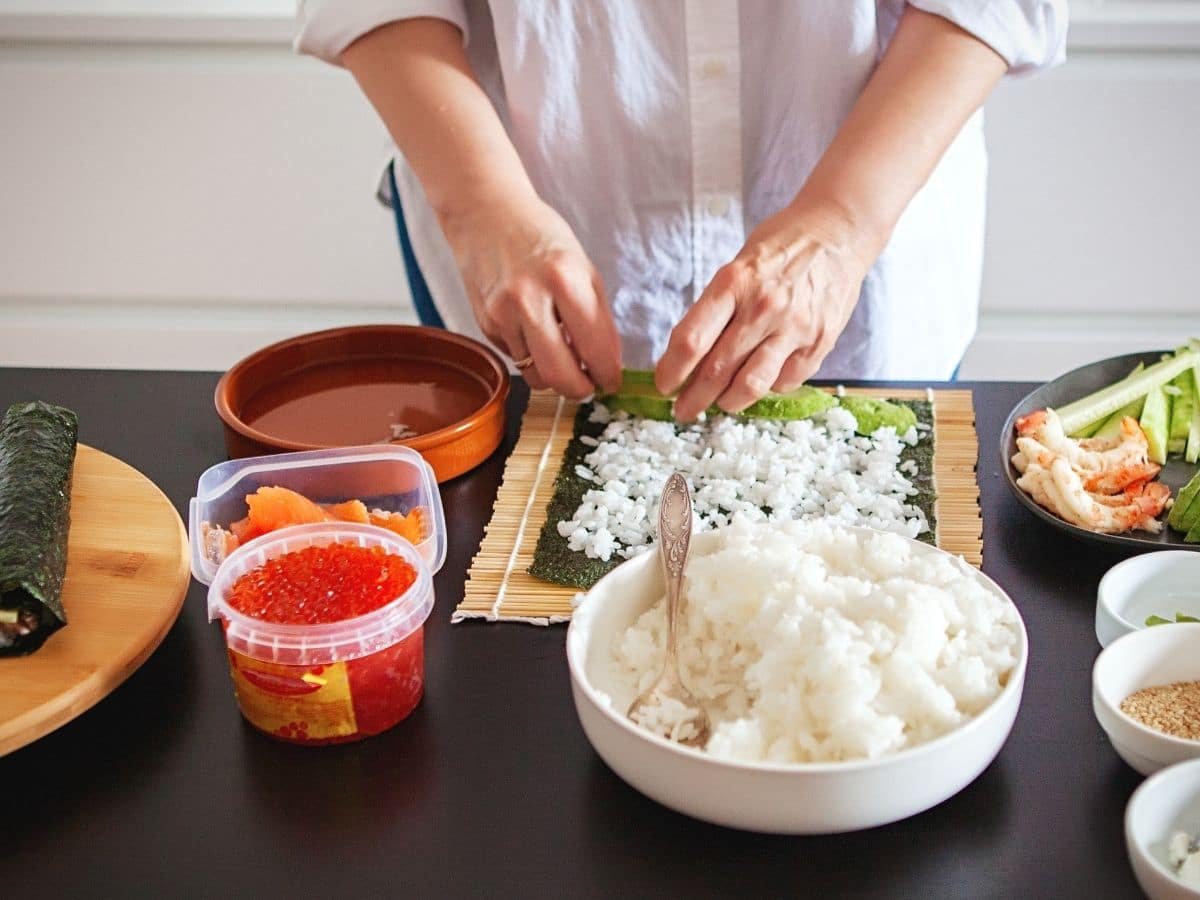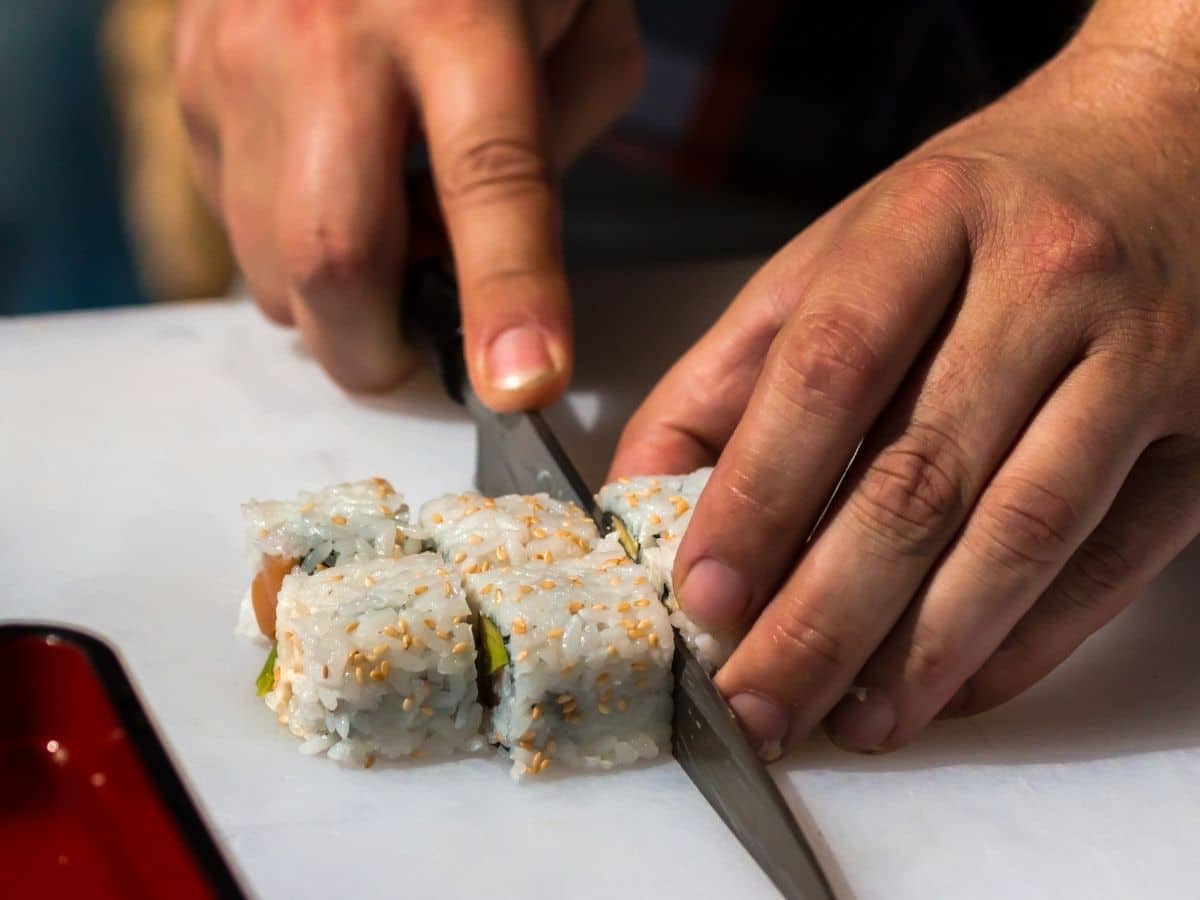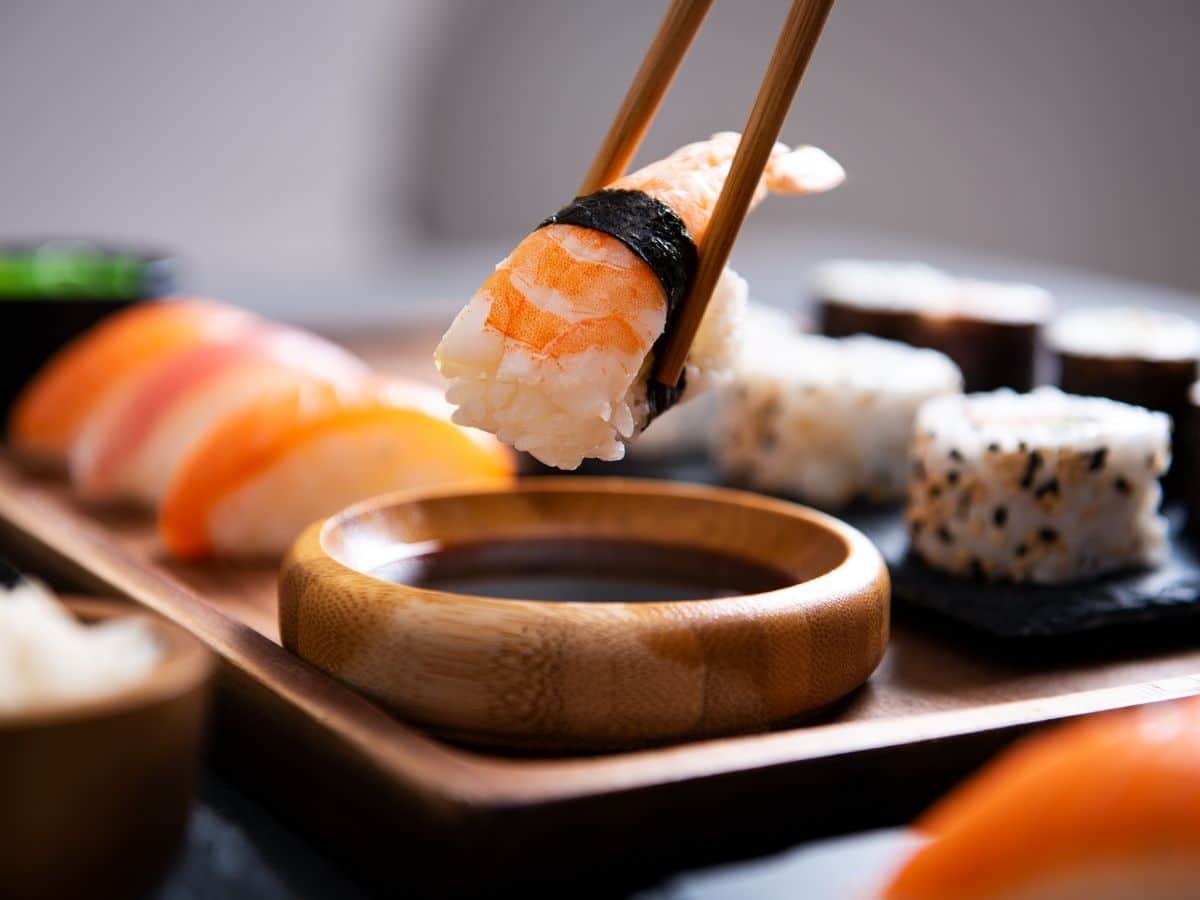You can find sushi restaurants that serve gluten free sushi, but if you are gluten free and you don’t know what questions to ask, you could be risking your health. Is sushi gluten free? No, a lot of sushi is not gluten free! Here are the best tips for gluten free sushi dining to help you enjoy your sushi dining experience.
This post may contain affiliate links. Please read our Disclosure Policy.

If you love sushi as much as my family does, you will want to dine out at a sushi restaurant sometime. We love gluten free sushi! Some sushi restaurants are better than others at serving gluten free guests safely.
Knowing what danger signs to look for at a sushi restaurant and how to communicate with your server to prevent cross-contamination can help immensely. If you are new to gluten free, don’t forget to check out my easy Gluten Free Living 101 Guide.
Do you love sushi? Our family can’t get enough gluten free sushi. We are fortunate enough to have a Japanese grocery store, Mitsuwa, a few minutes away, so we can make our own sushi at home.
Sushi restaurants and their menus can be tricky to navigate, and often, there is a language barrier when you try to explain the precautions you need to the sushi chef. Good sushi restaurants are usually busy, making it hard to take precautions against cross-contamination.
I like to call the sushi restaurant ahead of time to ask if they can take the precautions I need before I arrive. This way if they are unable to take these steps, I know not to waste my time driving there.”
Sandi at Fearless Dining

If the sushi restaurant you want to go to can’t follow simple precautions to keep you safe, you risk being “glutened.”
Here are my top 7 tips for safe sushi dining:
1. Make sure the restaurant has tamari or gluten free soy sauce. If the restaurant doesn’t have any, you can order these little individual packets of gluten free soy sauce that you can take with you discreetly so you can enjoy your sushi. I keep a couple in my purse for those just-in-case moments. (Keep the packets in a sealable plastic baggie, just in case!) Our family uses this brand because the little plastic packets are strong, so there is no tamari explosion in your purse!
2. DO NOT EAT IMITATION CRAB!! Imitation crab contains wheat, and it is unsafe to eat if you are gluten free. Many sushi restaurants have real crab, which is worth getting as a substitute. (It tastes a lot better as well!) If the restaurant doesn’t have real crab, stick to tuna and other real fish. If you want to make gluten free California rolls at home, this brand of gluten free imitation crab is a good one to use.
3. Ask the waitperson or sushi chef to use a clean sushi mat. This is critical. Sushi chefs roll many sushi with fried items, such as soft shell crab and tempura, into the rolls. You don’t want any particles of the fried gluten getting into your sushi roll.
4. Ask the sushi chef to change his gloves.
Email This Recipe To Me!

5. Make sure the sushi chef uses a clean cutting board and knife to cut your sushi. Again, the sushi chef cuts a lot of different sushi rolls, and the risk of cross-contamination is high.
6. Do not include sauces on top of or in your sushi rolls unless your waitperson checks the ingredients. Many sauces like ponzu and nigiri contain soy sauce, which means gluten exposure. When in doubt, skip the sauces. This includes making sure there is no malt in the Rice Vinegar!!
7. Order your sushi so it is made to order for you. If you go to a Sushi Boat-style sushi restaurant, sushi plates float around on those little boats and are mass-produced. The sushi chefs do not take any precautions when making this sushi. You also have no control if a customer grabs a sushi plate, decides that is not what they wanted, and puts it back on the floating boats.
Gluten Free Sushi FAQ:
Many sushi rolls contain gluten. It is always best to check with your server or sushi chef to ask what ingredients they use in their sushi rolls.
Tempura does have gluten, as it is made with wheat. If you want to make tempura at home, use this gluten free tempura batter mix.
Most sushi rice is gluten free, but you need to ask the restaurant to read the vinegar label you used. Some vinegar is made with malt, which contains gluten.
The best way to find gluten free sushi restaurants is using an app called Find Me Gluten Free. It searches based on your location and can tell you where restaurants with gluten free food are, and you can read reader reviews of that restaurant to get an idea of how safe it is.

I hope this article helps. If you have some more tips for dining at a sushi restaurant, please share them with us so we can all stay safe:-). If you are craving dessert, try this deliciously fun Dessert Mango Sushi recipe a try!
This post was updated from an older May 2014 post.


Rachel, you might need to do some reading to understand that some people don’t choose to eat gluten free because it’s trendy, but because we have a disease that brings many awful side effects and health complications, both short term and long term, when we eat gluten. I would do almost anything to not have celiac disease and to have the freedom to eat what I wanted. This isn’t about eliminating junk food out of our diets 🙄
I didn’t know that sushi had gluten in it! That’s really good to know for my mother. I’ll have to tell her these tips for when we go out for sushi!
Hi Tara, sushi can have gluten via the imitation crab, or even from cross contamination (ie: cutting a roll after cutting tempura sushi, etc.) It is always good to know potential dangers in order to prevent getting sick.